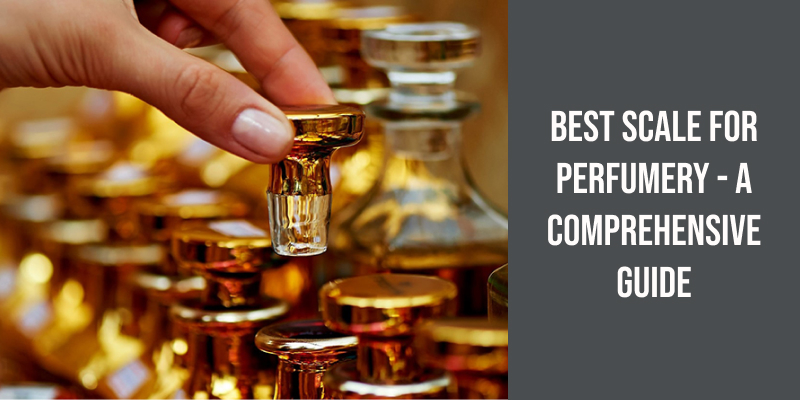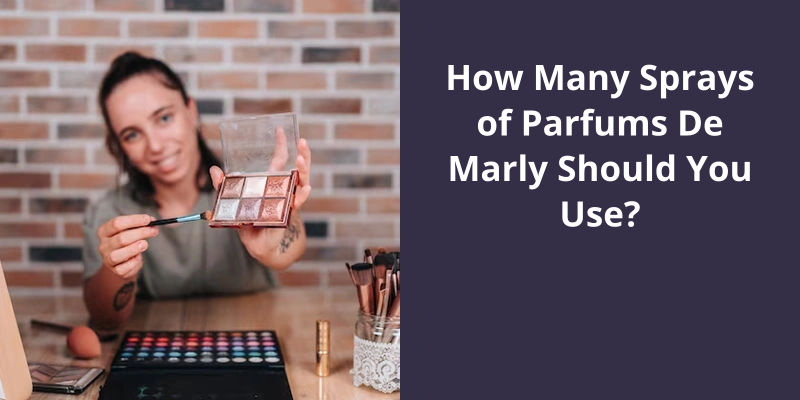The best scale for perfumery constitutes a tool that combines precision, ease of use, and affordability. Precision is crucial in perfumery, hence a digital scale with detailed increments of 0.01g or less might be best. Brands such as Smart Weigh are popular in the perfumery world, offering user-friendly functionality and high accuracy. Affordability is another key factor, and while high-end lab scales can run into hundreds or even thousands of dollars, solid digital options for craft perfumers are available at far more accessible price points. Furthermore, look for a scale with a tare function for effective ingredient measuring.

How Can You Tell if Perfume Is High Quality?
When looking for high quality perfume, there are a few things to keep in mind. Firstly, check the packaging. High quality perfume will be packed in sturdy and well designed bottles, often with intricate detailing and a smooth finish. The packaging should also be well sealed, with no signs of wear or tear. The presentation is a great indicator of the attention to detail that went into the perfume.
Next, take a close look at the labels. High quality perfumes will have clear and legible labels that include detailed information about the perfume, it’s ingredients, and the manufacturer. Look for any inconsistencies or vague labels, as these could be signs of a counterfeit product. Make sure you’re familiar with the brand and packaging of the product you’re buying to help spot any discrepancies.
To determine the authenticity of a perfume, feel the bottle. High quality perfumes will have a weight to them, making them feel substantial and sturdy. The materials used to make the bottle should feel sleek and smooth to the touch, with no rough edges or visible seams. If the bottle feels cheap or flimsy, this could be a sign of a lower quality or imitation perfume.
Observe the perfume itself. High quality perfumes will have a clear, consistent color and a uniform consistency throughout. The fragrance should also be strong and long lasting, with a pleasant aroma that remains consistent over time.
Research your go-to perfume. Whether you’re purchasing a new fragrance or restocking a familiar one, it’s important to do your research. Look for reviews and feedback on the specific product you’re considering, paying attention to any concerns about authenticity or quality. Research the manufacturer and their reputation in the industry, taking note of any red flags or warning signs. By educating yourself about the product, you can ensure you’re purchasing a high quality and authentic perfume.
What Does Grade 2 Perfume Mean?
But what exactly does Grade 2 perfume mean? It typically refers to the concentration of fragrance oils in the perfume. Perfumes are classified based on their oil concentration levels, and the higher the concentration, the more potent and longer-lasting the scent will be. Grade 2 perfumes usually have a concentration of 10-20%, making them a good choice for everyday wear for those who don’t want a heavy fragrance.
Grade 2 perfumes can also be categorized based on their scent profiles, such as floral, fruity, or woody. These scents are created by combining different aromatic compounds and fragrance extracts to achieve a desired scent profile. Some popular Grade 2 perfumes include Chanel No. 5, Marc Jacobs Daisy, and Dolce & Gabbana Light Blue.
They still provide a pleasant scent, but are less overpowering and can be suitable for everyday wear at school, work or social events.
When selecting a Grade 2 perfume, it’s important to consider your own personal preferences and how the fragrance interacts with your body chemistry. The same perfume can smell different on different people due to variations in our skin pH levels and body odor. It’s also important to apply perfume correctly by spraying it on pulse points such as the wrists, neck and behind the ears for a longer-lasting scent.
They come in a variety of scents and are suitable for everyday wear. Just remember to apply them correctly and find a scent that works well with your own body chemistry for best results.
As consumers, we want to make sure we’re getting our money’s worth when purchasing high-end cosmetics. For perfume enthusiasts, ensuring the authenticity of the fragrance is crucial. There’s nothing worse than spending a fortune on what you think is a high-quality perfume only to find out it’s a poor imitation. Here are five ways to check if your perfume is authentic and of excellent quality: checking the packaging, examining the labels, feeling the bottle, observing the perfume, and researching your go-to perfume.
How Can You Tell How Strong a Perfume Is?
These perfumes are often more expensive than those with a lower fragrance concentration, but they also tend to last longer and have a stronger scent. One way to tell how strong a perfume is, therefore, is by looking at it’s fragrance concentration.
If you need to apply several sprays to have the scent linger for a few hours, then it’s likely that the fragrance concentration isn’t very high.
The type of perfume also affects it’s strength. Generally speaking, eau de parfum is stronger and lasts longer than eau de toilette. This is because eau de parfum has a higher concentration of perfume oils compared to eau de toilette, which contains more alcohol and less perfume oil.
Some people have a more sensitive sense of smell and will find perfumes to be stronger than others. This means that a perfume that may seem strong to one person may not seem as strong to another. It’s therefore important to try out a perfume on your own skin to get a sense of how strong it’s for you personally.
Certain ingredients like patchouli or amber can create a strong and long-lasting scent, while lighter ingredients like bergamot or citrus may not be as strong. A perfume with more top notes, for example, may seem lighter and fresher, while a perfume with more base notes may seem heavier and more intense. Overall, there are many factors that can determine the strength of a perfume, and it’s important to consider them all in order to choose the right fragrance for you.
How Do You Check Perfume Level?
Checking the level of a bottle of perfume is a simple and easy process. It’s important to be aware of how much perfume is left in the bottle as it may run out without warning, leaving you without your favorite scent. The process of checking the perfume level is also important for those who like to keep track of their inventory or for those who want to ensure that they don’t run out of their favorite fragrance.
This allows you to see how much liquid is left in the bottle and determine how much you’ve left. However, if the bottle is opaque or dark in color, this method may not work. In such cases, you should hold the bottle up to a light source and look closely at the amount of liquid inside.
As the perfume is used, the weight of the bottle will decrease. Simply holding the bottle and getting a sense of it’s weight will give you an idea of how much perfume is left in it.
If you’re unsure about the level of perfume in a bottle, you can also try shaking it gently. This will allow the perfume to move around in the bottle, and you can listen for the sound of liquid moving around inside. If you can’t hear any liquid moving, it’s likely that the bottle is empty or close to being empty.
For bottles with a spray nozzle or atomizer, you can also test how easily or smoothly the perfume comes out. If the atomizer struggles to deliver a spray, it’s likely that the perfume level is low and the bottle will soon be empty.
By following these tips, you can stay on top of your inventory and always have your favorite scent on hand.
How to Properly Store Perfume to Extend It’s Lifespan and Prevent Spoilage
To ensure your perfume lasts longer, it’s important to store it properly. You should avoid exposing it to direct sunlight or high temperatures, which can cause it to spoil. Instead, store it in a cool, dry place away from light and heat sources. Additionally, keep the fragrance bottles tightly sealed to prevent air from getting inside, which can also spoil the perfume. A dark and cool drawer is a good place to store your perfumes.
What Is Used for Perfumery?
Flowers: Flowers are the most popular source of fragrance in perfumery. There are many different types of flowers used in different ways, from rose petals to jasmine buds, and different flowers have different chemical compounds that give them their unique scent. For example, roses are often used for their sweet, romantic smell, while jasmine is known for it’s exotic, intoxicating aroma. Other popular floral fragrances include lilac, lily-of-the-valley, and ylang-ylang.
Fruits: Fruits are another popular source of fragrance in perfumery. Citrus fruit, in particular, is commonly used for it’s zesty, refreshing scent. Examples include orange, lemon, grapefruit, and bergamot. Other fruits used in perfumery include apple, peach, pineapple, and blackcurrant.
Spices: Spices are often used to give perfumes a warm, sensuous quality. Some of the most commonly used spices include cinnamon, cloves, ginger, cardamom, and nutmeg. These fragrances are often marketed towards men, but can also be enjoyed by women who appreciate the warm, spicy notes in perfume.
Resins and balsams: Resins and balsams are used in perfumes to give them a rich, deep, and complex scent. Examples include frankincense, myrrh, benzoin, and balsam of Peru. These fragrances are often used in oriental perfumes, which are typically warm and spicy with a hint of sweetness.
Animal products: Finally, some perfumes use animal products to add a musky or animalistic quality to their scent. These include musk (derived from the musk deer), civet (derived from the African civet cat), and ambergris (a waxy substance produced by sperm whales). However, the use of animal products in perfumery is controversial, and many modern perfumes use synthetic versions instead.
Synthetic Fragrances: With Advances in Technology, Many Synthetic Fragrances Have Been Developed to Mimic Natural Fragrances and Even Create New Scents That Can’t Be Found in Nature. These Synthetic Fragrances Can Offer a More Affordable and Consistent Option for Perfumers.
Synthetic fragrances are man-made scents created using advanced technology. They imitate natural fragrances and can even create new ones that don’t exist in nature. They’re affordable and offer a consistent option for perfumers.
Overall, the ingredients used in perfumery are diverse and varied, with each one offering a unique scent and character to the finished fragrance. Whether you prefer floral, spicy, or musky notes, there’s a perfume out there to suit every taste and preference. From delicate and feminine to bold and sensual, the world of perfumery is vast and constantly evolving.
But what about other costly ingredients in perfumery? Let’s explore some other elements that make fragrances luxurious and expensive.
What Is the Most Expensive Ingredient in Perfumery?
Ambergris is a rare and valuable substance produced by sperm whales as a secretion to protect their stomachs from sharp objects. Over time, this secretion transforms into a waxy, grayish substance with a unique and complex fragrance.
Ambergris has been used in perfumery for centuries and is highly prized for its exceptional ability to enhance and fix fragrance compositions. It is often described as having a sweet, earthy, and marine-like aroma that adds depth, richness, and longevity to perfumes.
Due to the scarcity of natural ambergris and the difficulty in sourcing it ethically (as it comes from whales), the cost of genuine ambergris is extraordinarily high. Perfumers and fragrance houses that choose to use ambergris in their compositions need to pay a premium for this rare and sought-after ingredient.
While natural ambergris is one of the most expensive perfume ingredients, it’s worth noting that other rare and precious natural materials, such as certain types of natural oud, rose, jasmine, and iris, can also command high prices in the world of perfumery.
However, the fragrance industry is continuously evolving, and new techniques and synthetic alternatives are being developed to recreate certain fragrance notes, including ambergris, without the need for natural animal-derived ingredients. These synthetic alternatives offer a cruelty-free and more sustainable approach to creating luxurious fragrances.
Conclusion
A balance must be struck between cost-effectiveness and precision to ensure the creation of high-quality fragrances. Although there are various scales available in the market, electronic scales have proven to be the most reliable and accurate. Their ability to weigh small amounts of substances in grams and milligrams makes them ideal instruments in perfumery. Additionally, electronic scales are easy to use and maintain, making them cost-effective in the long run.





